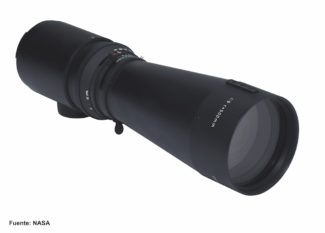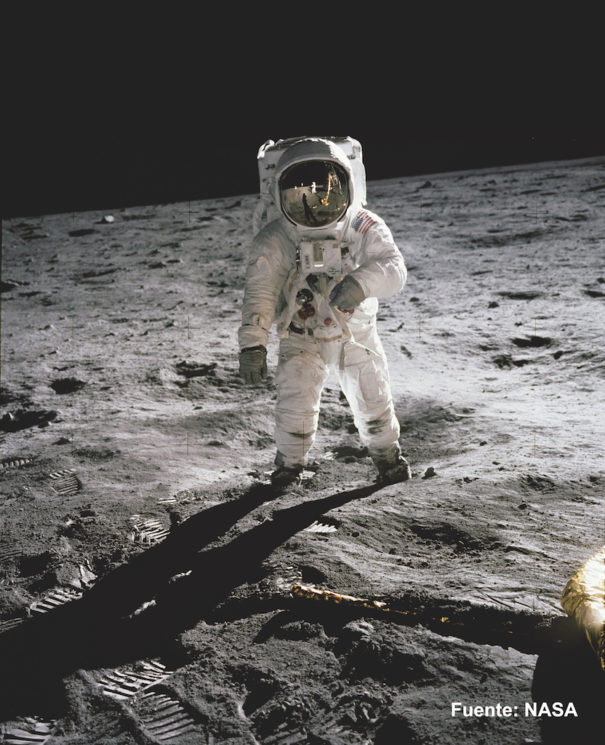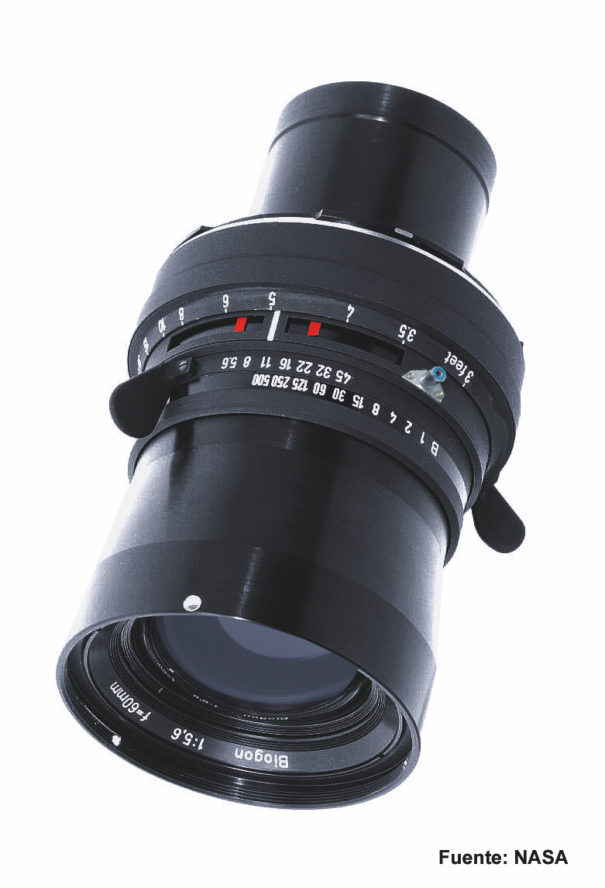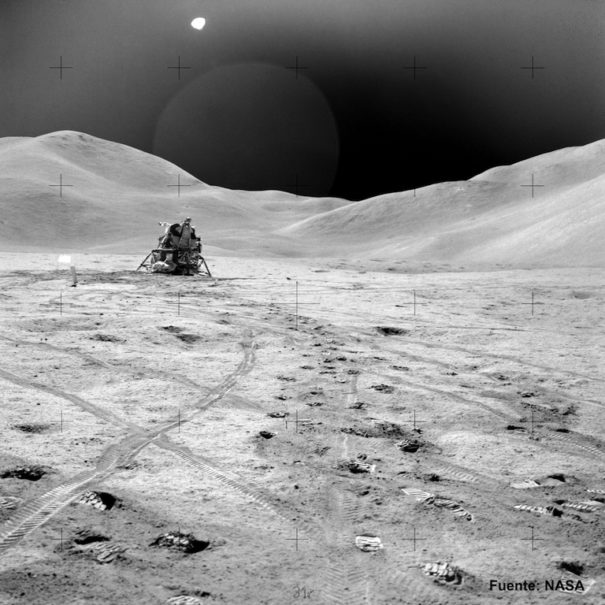Así logró Zeiss capturar las primeras imágenes desde la Luna hace 50 años
La NASA necesitaba los mejores equipos para documentar la llegada a la Luna. Las imágenes icónicas de la luna que conocemos, se tomaron con cámaras y objetivos de la marca alemana Zeiss.
El 20 de julio de 1969, un sueño colectivo se hizo realidad. Una huella simboliza este logro. Aquel día, el hombre pisó la Luna por primera vez y los límites de lo que parecía imposible fueron redefinidos.
Pero el camino fue largo. Cuando se determinó el objetivo de enviar a un hombre a la luna y regresar a salvo a la tierra, muchas personas ayudaron a hacer realidad este sueño de la humanidad. Se involucraron miles de ingenieros y técnicos de todas las disciplinas y países. El fabricante alemán Zeiss también formó parte del desafío. Las imágenes icónicas de este logro monumental se tomaron con objetivos y cámaras Zeiss, especialmente diseñadas para el espacio.
En las primeras misiones espaciales, los astronautas probaron con cámaras convencionales. Convencida de la importancia que iba a tener documentar gráficamente cada expedición, la NASA buscó las mejores cámaras y las mejores lentes. Buscó a Zeiss, una marca con más de 170 años de historia a sus espaldas, para fotografiar el espacio y para fotografiar en el espacio.
Para la marca alemana, fotografiar y filmar en el espacio supuso un reto apasionante que exigió de la invención de nuevas tecnologías para enfrentar lo desconocido. En primer lugar, era necesario que cámaras y lentes funcionaran perfectamente con las fluctuaciones extremas de temperatura. Asimismo, había que lograr que la óptica de la lente funcionara perfectamente en gravedad cero, y también llevar a cabo cambios mecánicos para poder usarla en el espacio. La mayor parte de los logros más destacados en el diseño de lentes para fotografíar o filmar el espacio exterior se deben a Erhard Glatzel y su equipo, Johannes Berger y Günther Lange.
En la década de 1960, Glatzel fue uno de los principales científicos y gerentes del departamento de diseño de lentes de Zeiss en Oberkochen (Alemania).
Durante los aterrizajes lunares, y en las misiones previas, la fotografía jugó un papel clave. Se efectuaron más de 100.000 fotos previas que sirvieron para preparar las misiones Apollo.
Durante los seis aterrizajes lunares, entre 1961 y 1972, se capturaron más de 33.000 imágenes. Estas imágenes de las misiones a la luna se han convertido en hitos generacionales, por su valor histórico y científico, pero también por la plasticidad y calidad excepcional de las imágenes Zeiss.
Las primeras fotografías del espacio se tomaron en 1962, durante la misión del Mercury Atlas 8. Entonces una imagen de La Tierra tomada desde el espacio, aún era auténtica primicia. Una cámara de formato medio con un objetivo Zeiss Planar 2.8 / 80 con solo unas pocas modificaciones con respecto a la de serie se puso en órbita por primera vez para estudiar y documentar La Tierra.
 Durante la segunda misión de la nave Géminis, en 1965, se tomó la primera imagen de una nave espacial en órbita. Una cámara Zeiss Ikon Contarex especial conectada a una pistola de propulsión a gas permitió al astronauta manipular la cámara mientras flotaba con gravedad cero. Las imágenes de alta calidad podían proporcionar información importante sobre el planeta, masas de tierra y agua, y sobre sus patrones y sistemas climáticos. La importancia de las imágenes hizo que los astronautas fueran entrenados, específicamente, para la toma de fotografías.
Durante la segunda misión de la nave Géminis, en 1965, se tomó la primera imagen de una nave espacial en órbita. Una cámara Zeiss Ikon Contarex especial conectada a una pistola de propulsión a gas permitió al astronauta manipular la cámara mientras flotaba con gravedad cero. Las imágenes de alta calidad podían proporcionar información importante sobre el planeta, masas de tierra y agua, y sobre sus patrones y sistemas climáticos. La importancia de las imágenes hizo que los astronautas fueran entrenados, específicamente, para la toma de fotografías.
En 1966, durante la expedición Géminis 9 las fotografías de una maniobra de aproximación revelaron el problema técnico y ayudaron a solventarlo.
El 21 de diciembre de 1968, la nave Apolo 8 se convirtió en la primera expedición tripulada en abandonar la órbita de la tierra y viajar hacia la Luna. La misión era orbitar la luna, fotografiar el paisaje lunar e identificar los lugares adecuados para aterrizar. Hasta entonces, sólo existían especulaciones sobre cómo sería la superficie de la Luna.
Algo ocurrió durante la cuarta órbita lunar del 24 de diciembre que no estaba en el plan de vuelo. Cuando la nave espacial emergió del lado oscuro de la Luna, los astronautas contemplaron La Tierra elevándose sobre el horizonte lunar. Se apresuraron a capturar esta impresionante imagen y tomaron la primera fotografía en color del planeta azul. Esta imagen, Salida de la Tierra, de un pequeño planeta azul que flota en la oscuridad del espacio, cambió para siempre la perspectiva del mundo, convirtiéndolo para siempre en el frágil y precioso planeta que llamamos hogar.
El 20 de julio de 1969 el hombre pisó la luna por primera vez. Más de 500 millones de personas en todo el mundo vieron este primer paso y se asombraron con las imágenes que trajeron a La Tierra desde la superficie lunar.
Zeiss diseñó el objetivo gran angular Biogon 5.6 / 60 específicamente para el aterrizaje lunar. Las fotografías debían capturar la superficie de la luna con un excelente contraste de borde a borde y una definición máxima. La cámara estaba equipada con una placa de cristal Reseau, que creaba marcas de cruz en las imágenes durante la exposición. Estas marcas distintivas hicieron posible calibrar distancias y alturas permitiendo análisis de relación de tamaño de objetos en la luna.
Durante la misión del Apolo 17, hasta la fecha la última tripulada a la Luna, los astronautas capturaron espectaculares fotografías panorámicas del paisaje lunar surrealista. Durante esta misión, la última de las 12 cámaras que se emplearon se quedó en el suelo polvoriento, con la lente apuntando al cenit. ¿La razón? Si un astronauta regresa al lugar de aterrizaje de esta misión, se podría realizar un análisis en la lente para medir el impacto de la radiación solar cósmica.
¿Te gustó este artículo?
Suscríbete a nuestro NEWSLETTER y no te perderás nada.





